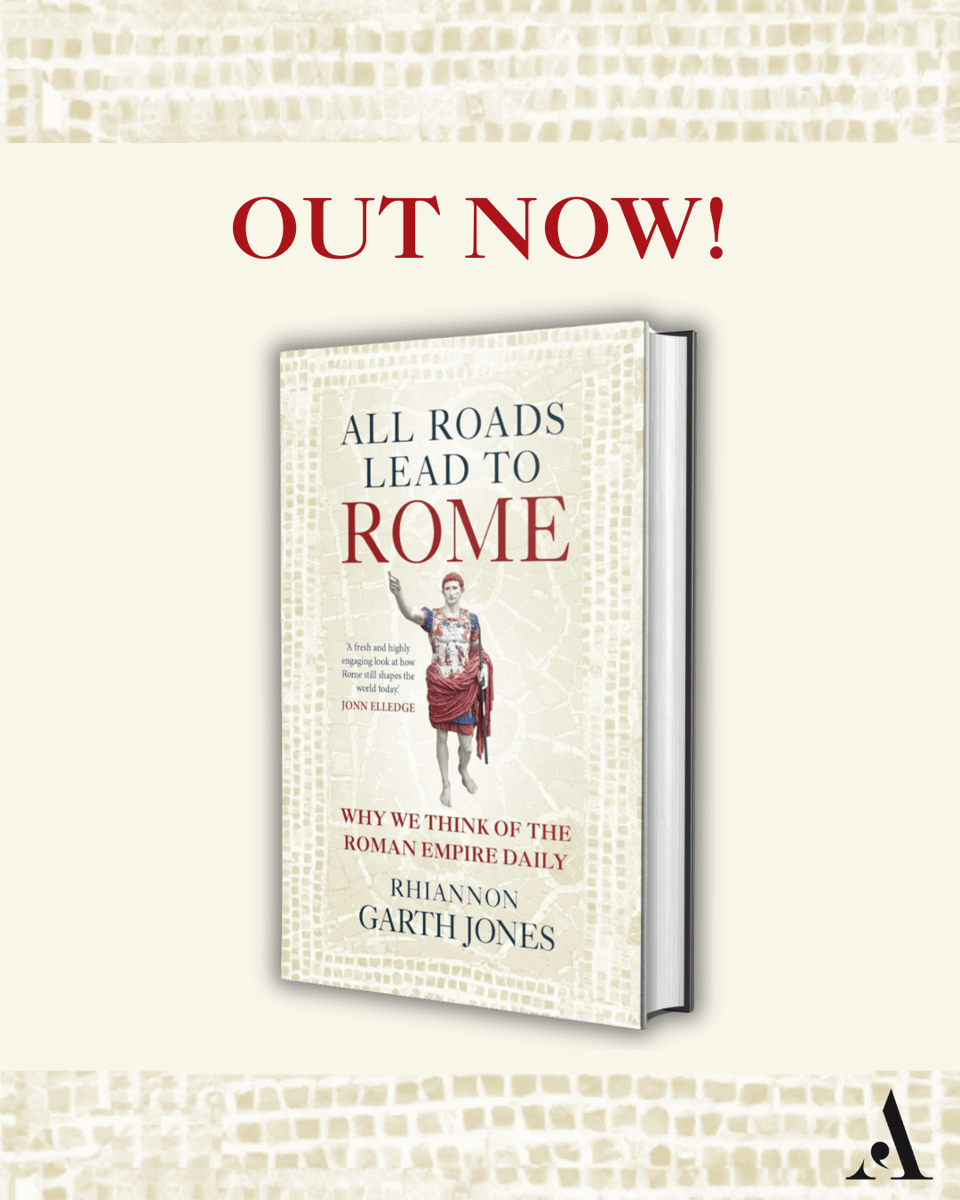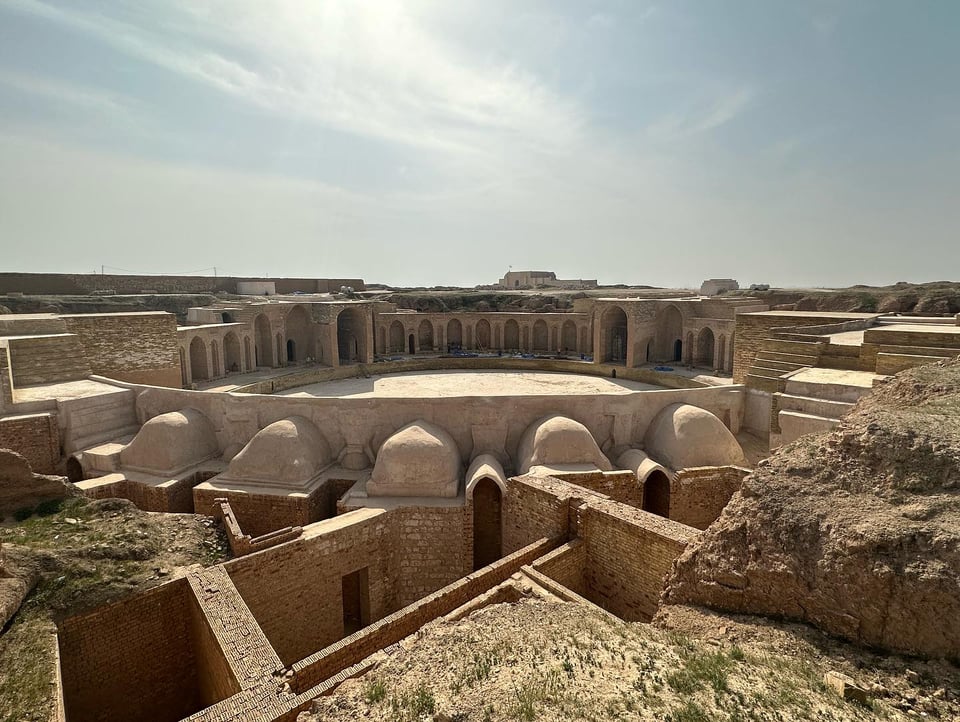How (Not) to Flatter a King
A 9th-century Poem from Iraq on Power, Buildings, and Memories of Rome

Modern Medieval
by David M. Perry and Matthew Gabriele
We’re delighted to offer this guest post by Rhiannon Garth Jones, whose new book All Roads Lead to Rome is both wonderful and out now!
Many years ago, many miles away from where you are likely reading this, a desperate man tried to publicly flatter a powerful ruler into forgiving him. He did so by comparing the ruler’s accomplishments with those of the Roman empire – an almost timeless trope (some would even say a tiresome trope). But this man wasn’t appealing to Charlemagne in ninth century Aachen, or Ivan the Great in fifteenth century Moscow, or Donald Trump in twenty-first century Washington. This particular flattering comparison with Rome came in ninth century Iraq.
The man in question was Ali ibn al-Jahm, a poet and courtier, and the powerful ruler was the caliph al-Mutawakkil, leader of the enormous Abbasid Caliphate. Medieval Muslims also thought a lot about the Roman empire, it turns out.

My new book, All Roads Lead to Rome, explores the ways different peoples in different places and times have compared themselves to Rome, and how that shapes the world we live in. Two key ideas emerged, which are perfectly captured by Ali ibn al-Jahm’s particular efforts to flatter his ruler. These two ideas – that buildings convey the strength of a society and its leaders to contemporaries and to future generations, and that Rome is a reference point for imperial glory – connect Ali ibn al-Jahm and the caliph al-Mutawakkil with their medieval contemporaries in Europe, with multiple empires since, and with us today.
In the year 861 (by the Gregorian calendar; 248 by the Muslim calendar), in the great palace city of Samarra, Ali ibn al-Jahm languished in jail. His plight was a consequence of having offended his ruler and so, he hoped, he could escape his predicament with flattery – that he could use his way with words to sway the heart of the autocratic caliph. With his friends, he came up with a clever plan.
Poetry was an essential part of Abbasid culture, one of their most beloved traditions. Poets could be the superstars of their day and society at every level delighted in a good show, whether it was in the streets or in the imperial courts. As a court poet, Ali ibn al-Jahm knew he had an opportunity. He carefully composed his words and, in front of elite society, in one of the magnificent imperial palaces, his friends performed the resulting poem on his behalf. That context tells us that the flattery he employed reflected values held by both the Abbasid leader and the elite members of Abbasid society who were gathered to listen.

The poem is filled with dazzling descriptions and glorifying comparisons, including a claim that even Solomon – the legendary ancient king whose buildings were so extraordinary it was believed superhuman beings had produced them for him – would recognise the power and prestige of al-Mutawakkil’s rule and the Abbasid dynasty. Every word was carefully selected to appeal and impress.
Let’s take a closer look at those words. The poem opens with:
I still hear that kings / build, according to their acumen
And I know that the wisdom of men / is destroyed with their ruins
In these few lines, our poet manages to do a lot. Firstly, he establishes his central theme: that buildings have always been a way to show power.
From Göbekli Tepe to Nan Madol, Mbanza Kongo to Tiwanaku, Sigiriya to Stonehenge, people across time and space have built monumental constructions to express themselves and impress others. Tourists travel to marvel at these huge ruins, fascinated by the past societies that built them. Chances are you’ve done so yourself. Perhaps you wrote something about the experience in a letter to a loved one, or publicly documented your visit – just as we know people in the Abbasid Caliphate did.
In these same lines, the poet also positions himself as an expert: he, Ali ibn al-Jahm, understands these eternal truths and he is therefore able to comment on the present examples. This poem is about the author as well as the subject. Finally, this opening subtly reminds the audience of the role of poetry: you don’t have to see a monumental building to hear about it and recognize the power of its builder. A poet can spread the word: Abbasid society prized learning and literature highly but it was still the case that most people couldn’t read. However, they could – and did – listen to performances of poetry in the street, at public festivals, and at court. And they could – and did – pass on what they heard.
Poetry, Ali ibn al-Jahm is reminding his audience, memorializes a ruler’s power just like buildings. And buildings can fall into ruin, representing the decline of their rulers, whereas words might last much longer. This idea of words as an important record, as a major part of a ruler’s legacy, was a common theme of early Islamic society and, again, it reflects a wider, shared idea.
A few lines further in, the poem captures something more specifically relevant about the medieval and modern worlds in particular:
You built, vindicating the Muslims / to their apostates and unbelievers,
Creations that Persia has not seen, / nor Rome, in the course of their lives!
The caliph’s buildings don’t just communicate power in a general way. They speak to those who don’t already have faith in that society (unbelievers), or who once had faith but have lost it (apostates), and demonstrate the superiority of Muslim religion and society. They do this, the poet suggests, because they are greater than those ever produced by Persia and Rome. For elite medieval Muslims, living in one of the largest and most powerful empires we know of, one of the two main reference points for imperial glory was Rome.
The emperor Constantine built a new capital city in the fourth century to revive the empire and embarked on a huge building programme to reassure residents it would be as good as the old Rome. Charlemagne built the Palace of Aachen in the eighth century, a religious and political complex of grand architecture on an old Roman settlement to cement his rule. Around the same time, al-Mansur built the Round City of Baghdad to announce the new Abbasid dynasty to their Roman rivals. Ivan III and his co-ruler, Sophia Palaiologina, built multiple palaces and cathedrals in Roman styles across Moscow to start a new era in the fifteenth century. Washington, DC has so many classical-style colonnaded and domed buildings because Thomas Jefferson wanted people from the eighteenth century onwards to believe his new form of government was a Roman one.
We might not always express these ideas as clearly as Ali ibn al-Jahm but, on some level, we understand. It’s there in that sense of awe and curiosity with the feeling you get walking past an important government building in your own country – one that is supposed to represent you, your society, and your leaders. It’s why we tend to care about neglected heritage sites and pause to take photos of particularly noticeable architecture on holiday; in fact, it’s the reason why many people choose their holiday destination. These buildings have conveyed the strength of a society and its leaders to contemporaries and to future generations. The buildings worked.
The flattery didn’t work, unfortunately for Ali ibn al-Jahm. Apparently, although the opening lines greatly pleased al-Mutawakkil, he felt the poem tailed off towards the end and he wanted more. Sometimes the lessons we can take from history don’t require much examination: flattery is not a defence against autocratic rule.
Rhiannon Garth Jones is an author and historian who works with material culture and textual sources to think about how people used the past to define their identities and project power. Her popular history book, All Roads Lead to Rome, is out now.
Add a comment: